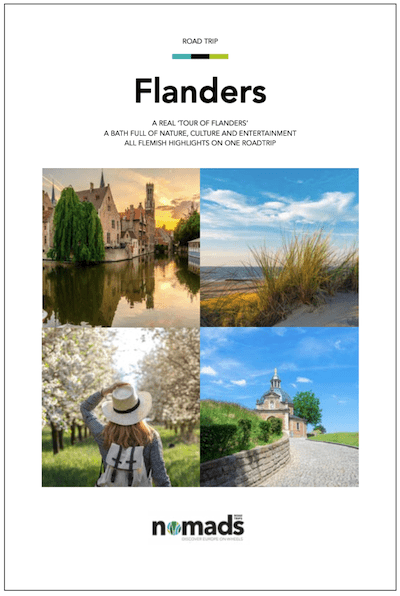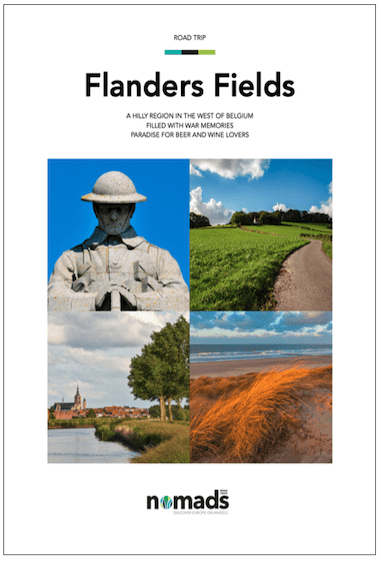
Flanders Fields
This 115 km road trip through Flanders Fields starts in Ypres on the main market square at the impressive 'In Flanders Fields' museum. This is followed by a drive through the rolling hills to Poperinge, the capital of Belgian hop and beer culture. The route continues through the Moeren polder area to the West Coast, a great stretch of North Sea for those who love a walk along the beach or in the dunes. The return journey leads through the Yser valley back to Diksmuide and the finishing point in Ypres.
Highlights along the way include various war memorials, authentic and world-renowned breweries, the charming Heuvelland and its wine estates, the nature reserve Flanders Fields and the wide beaches of the West Coast with its shrimp fishermen on horseback.
- Perfect travel companion if you want to discover Flanders Fields by motorhome, car or motorbike
- Clearly organised into 7 stages with 24 places of interest, travel tips, 15 hiking trails, 11 bicycle routes, local tourism services and places to stay (15 campsites and 13 RV parks)
- Available as PDF (travel guide 48 pages) in beautiful design, illustrated with inspiring texts and high-quality photography
- Includes interactive map for PC, tablet or smartphone so you have all information at hand when you're on the road
- Includes GPX files so you can download the full route and all cycling and walking routes onto your GPS
Read the first chapter
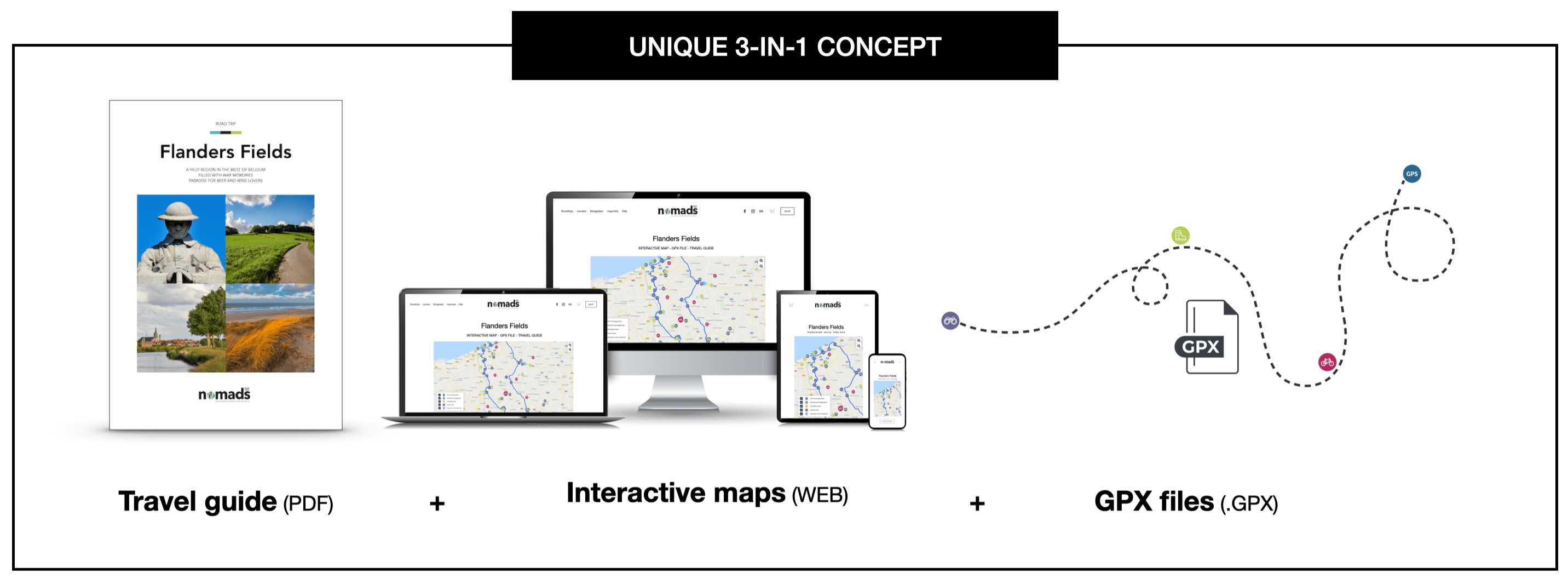
Some highlights on this road trip
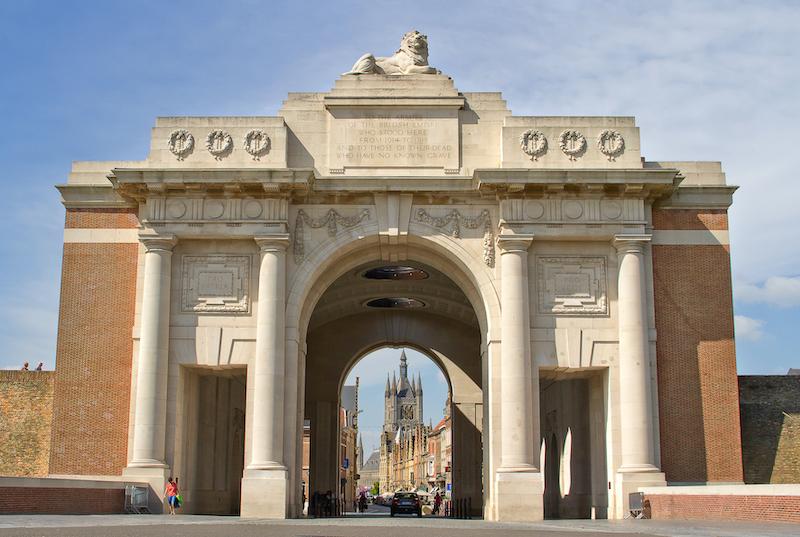
Ypres
Ypres is the largest town in Flanders Fields (Westhoek) and the beating heart of the region. The memories of the First World War cannot be ignored here. Be sure to visit the impressive ‘In Flanders Fields’ museum, an almost life-like confrontation with the horrors of war. Another must is the Menin Gate (Menenpoort), the symbol of the First World War where the names of 55,000 Commonwealth soldiers are inscribed on the inside and where every evening at 8pm the Last Post is sounded by the buglers of the Last Post Association. A goosebump moment!
But Ypres is of course more than just war memories. The large market square is beautiful and dotted with terraces, cafés and restaurants. There are also plenty of cycling and walking routes. For example, do a cycle trip to the Provincial Domain De Palingbeek or choose the city walk which runs along historical buildings, through small alleys and on top of the beautiful Vauban fortifications.

Ypres - Hill country (Heuvelland)
Had enough of the city bustle? On to the quiet of the countryside today. As soon as you pass the Lille Gate and turn right after the roundabout, the landscape changes dramatically. This is where you taste the character of Flanders Fields for the first time. Picturesque villages, scattered houses and farms, but also fine roads along which a soldier cemetery regularly pops up. Just before Kemmel, the Kemmelberg comes into view, the highest point in Flanders Fields. Kemmel forms part of the Hill country (Heuvelland) district, which consists of 8 small villages and some 18 hills. No wonder that this region is very popular with cyclists and is the setting for many cycling races.
Be sure to make a stop in Kemmel and explore the area around the Kemmelberg.
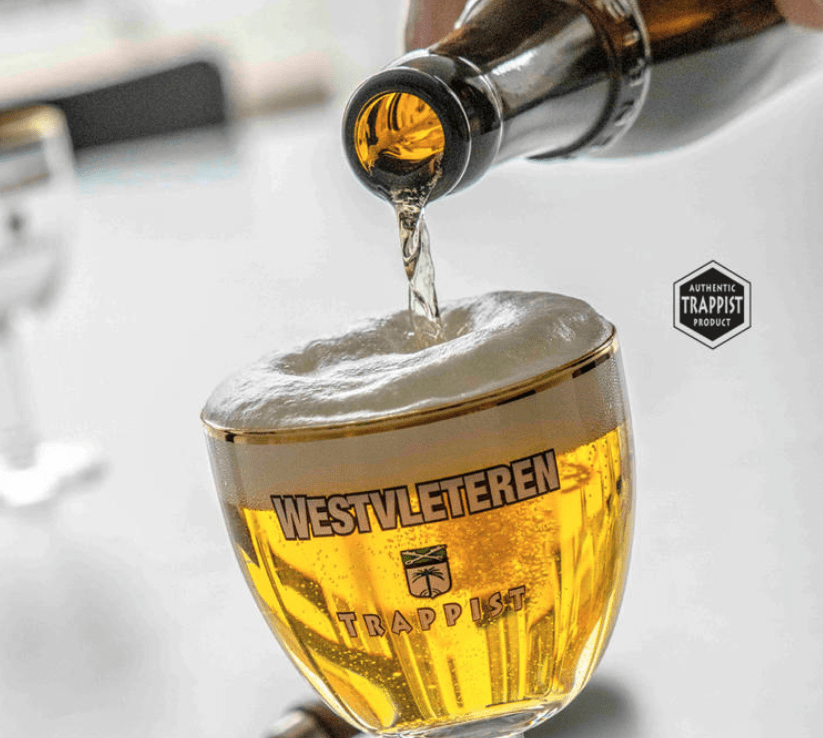
Hill Country (Heuvelland) - Poperinge
Poperinge is the capital of Belgian hop and beer culture. Hop has been cultivated in the Poperinge region since the 8th century. Apart from water, grain and yeast, hops are one of the four key ingredients of beer. Top beers such as Sint-Sixtus, Sint-Bernardus or Hommelbier are brewed in this region. Poperinge is holy ground for beer lovers. If you want to learn a lot about hop and beer in a short time you can best visit the Hop Museum.
Of course, the landscape around Poperinge is also strongly influenced by the First World War and there are numerous museums and attractions. You can also opt for a brisk walk, followed by ... a tasty regional beer. Be sure to make a stop in Roesbrugge, a cosy village by the Yser. This river had a great influence during the First World War.
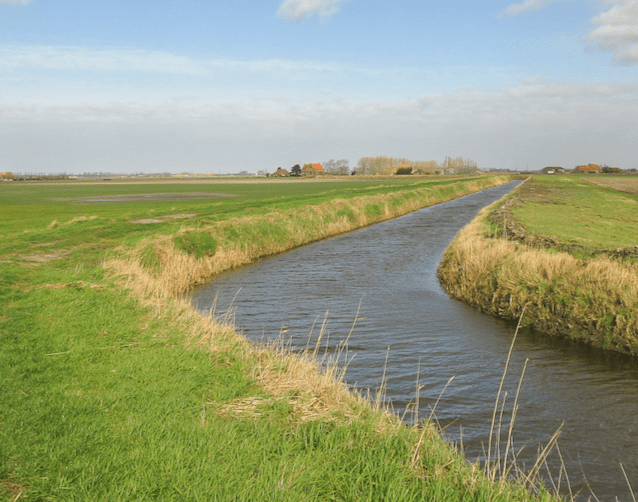
Poperinge - De Moeren
Between Roesbrugge and Veurne (on the coast), you drive through a thinly populated area, sometimes only a stone’s throw away from the French border. This used to be smugglers’ territory (especially tobacco). You pass Beveren-aan-de-IJzer, Leisele (turn left at café-restaurant De Schreve, dialect for ‘the border’), Doorntje and Houtem, one of the most beautiful villages on the route. It is not only a nice place to stop but also the beginning of De Moeren, a polder area that lies below sea level. A piece of ‘the Netherlands’ in Belgium. De Moeren is permanently drained by a system of canals (nicely shown on the interactive map of this route) that bring the excess water to higher grounds. In Houtem you will learn all about the centuries- old rectangular plot structure and the rectilinear pattern of canals and roads during the Ringslot walking

